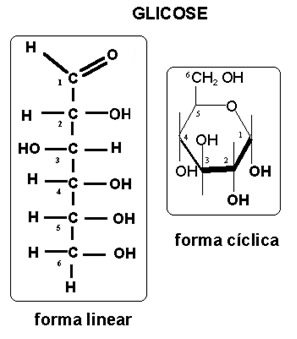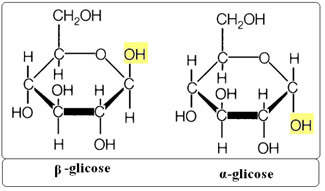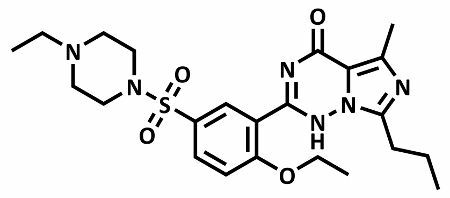THE glucose it is a carbohydrate (glycide) classified as monosaccharide or osse, as it does not undergo hydrolysis. Oses are classified as aldose or as ketoses; in the case of glucose, it is a aldose, because, as shown in its chemical structure below, in addition to the polyalcohol groups, it has an aldehyde group in its formula. More specifically she is a aldohexose:

Note that, in nature, the carbon chains of this molecule can be found either in linear form, which is the open-chain form; as well as in the cyclic form, which is the closed chain. In cyclic form, it can be found as α-glucose, in which the hydroxyl (OH) of the carbon to the right of the oxygen heteroatom is bound down; which is the case of the cyclic form shown in the figure above. If it is linked upwards, it is the β structure. This difference can be seen in the following illustration:

Because its structure is present only in dextrorotatory form, glucose is also called dextrose.
Another name she gets is grape sugar, as it is found in this fruit. It is also found in other fruits, such as figs, and can be industrially obtained through the starch hydrolysis reaction:
(Ç6H10O5)no + n H2O→ n C6H12O6
starch glucose
Glucose is also the most common sugar that circulates in the blood in our veins and is therefore called blood sugar. When we eat, the body digests food and absorbs certain nutrients needed to provide us with energy. one of them is glucose, which is mainly absorbed by the cells of the small intestine and subsequently carried into the current. blood.
Do not stop now... There's more after the advertising ;)
The proper blood glucose concentration should be about 70 to 110 mg for every 100 mL. This regulation is done through the production of a hormone called insulin, which is responsible for facilitating the entry of glucose into body tissues. There are people who have a deficiency in the production of this hormone, so the glucose ends up concentrating only in the bloodue and your concentration level ends up being higher than recommended. This case constitutes a hyperglycemia and the person is said to have a disease known as diabetes. More specifically for those with insulin production deficiency, diabetes mellitus type 1. It is necessary for the person to take certain medications, such as insulin.
The opposite may occur, in which, due to illness or prolonged lack of food, the amount of glucose in the blood decreases - that is, there is hypoglycemia. Thus, the person should receive glucose serum.
THE blood glucose it is a measure of the concentration of glucose in the blood. A person can take this measurement by sticking their finger and putting a drop of blood into a device called glucometer, or you can use the so-called glyco-tape, which, in contact with the person's urine, takes on colors that indicate the glucose level.

By Jennifer Fogaça
Graduated in Chemistry
Would you like to reference this text in a school or academic work? Look:
FOGAÇA, Jennifer Rocha Vargas. "Glucose"; Brazil School. Available in: https://brasilescola.uol.com.br/quimica/glicose.htm. Accessed on June 27, 2021.


